The independent utility grid in Texas wasn’t the only victim of this past February’s deep freeze that gripped the state. Unable to escape to Cancun like U.S. Sen. Ted Cruz, about 4 million fish all along Texas’ coast perished in the unusually cold weather.
And, truth be told, the number was probably much higher, given the widespread nature of the weather pattern and it’s steadfast commitment to keeping the Lone Star State frozen for several days in a row. Texas Parks and Wildlife claims a minimum of 3.8 million fish perished during the prolonged cold spell, but the department also noted that only 9 percent of the fish that died are classified as “game fish.”
That shouldn’t give recreational anglers along the coast a reason to celebrate. Among the majority of the fish that died are important food sources for more appreciated fish—pinfish, mullet, bay anchovies and even hard-head catfish made up the bulk of the die-off. Spotted sea trout accounted for about half of the game-fish deaths—TPW claims that more than 100,000 trout died during the extreme cold spell in the Lower Laguna Madre alone. When combined with the sea trout killed in the Upper Laguna Madre, TPW estimates that the region lost almost 90 percent of its trout.
Other game fish that perished included black drum, redfish, sheepshead, sand sea trout and gray and red snapper. Black drum were particularly hard hit in the upper Laguna Madre, where TPW estimates that about 83,000 fish died, or 78 percent of the coastwide black drum population.
The weather event may have a long-lasting impact on the inshore saltwater fisheries from the Lower Laguna Madre all the way up the coast to Galveston Bay. TPW, starting April 1, lowered the bag limits for Laguna Madre trout to three fish, and only fish between 17 and 23 inches can be harvested. The new regulations will stay in effect through the end of July, but can be extended another two months if it appears the fishery isn’t bouncing back.
TPW’s Coastal Fisheries Division Director Robin Riechers said the slot limit put in place is meant to give mature trout the ability to spawn over the summer. The new and temporary regulations were put in place “to help conserve the fish we have now and accelerate recovery,” he said.
This isn’t the first time Texas has had to deal with fish kills due to cold weather. In the 1980s, several “freeze events” killed about 32 million fish. In December 1983, more than 14 million fish died during a prolonged freeze that gripped the entire Texas Coast. Six years later, in February 1989, almost more than 11 million fish perished during a freeze-up from East Matagorda Bay south to the Lower Laguna Madre. Then, in what was considered a “double whammy” for Texas’ inshore fishery, a December 1989 freeze took out another 6 million fish.
Since those events in the 80s, other cold-weather events have taken their toll, but none hit game fish harder than a freeze in 1997 when more than half of the 330,000 fish lost were game fish.
“There are some important lessons from those historical events that we need to draw upon as we work to accelerate the recovery of our fish stocks, particularly speckled trout along the mid and lower coast,” said Carter Smith, executive director of TPWD. “The most obvious, and immediate one for speckled trout is conservation, a practice where every Texas coastal angler can make a contribution right now. Practicing catch and release or keeping fewer fish to take home in areas like the Laguna Madre will only give us that many more fish to rebuild from as we augment populations through our hatchery efforts, and we carefully evaluate what regulation changes may be needed to foster a quicker recovery for our bays.”
In the Lower Laguna Madre, the die-off is particularly alarming, however. Over the last several decades, about 90 percent of the inshore sea grass between Galveston Bay south to the Mexican border has died off—climate change, more frequent and more severe hurricanes, drought and pollution have all contributed to this phenomenon. The Lower Laguna Madre is home to about 80 percent of the remaining sea grass in Texas, and this habitat is vital to many of the inshore fish anglers love to target. Sea grass serves as a nursery to larval trout, redfish, and black drum. The freeze is but another blow to the overall health of the inshore fishery.
Granted, millions of trout, redfish and flounder are stocked into inshore waters from three saltwater hatcheries in Texas, so anglers may not feel the impacts of the environmental issues facing many of the bays and estuaries along the Texas coast—at least not right away. The continued decline of sea grass isn’t the only issue facing the coast — the Lower Laguna Madre is a “hyper-saline” bay, and during times of drought, it doesn’t get the inflows of fresh water from coastal rivers and creeks. And, of course, dry spells are more frequent now and they often last longer than normal.
And, in recent decades, the southern Texas coast has dealt with persistent brown tide events — algal blooms that limit light penetration to the bottom of the state’s shallow bays. The longest brown tide occurred over seven consecutive years in the 1990s, but shorter periods of brown tide blooms have come and gone since. The blooms generally occur during times of drought, which are becoming more frequent and lasting longer.
This past winter’s freeze adds to a complicated list of threats facing the ecosystem along the Texas coast, and anglers could very likely notice the diminished game fish populations. While the trout slot limits along the coast will help mature fish contribute more to the general population in time, a one-time freeze is but another hurdle the inshore waters must clear if they are to remain viable and productive in the decades to come.




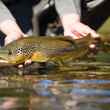
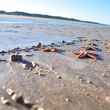

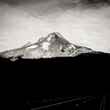



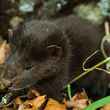
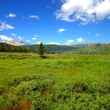



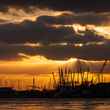
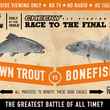



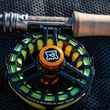
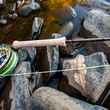



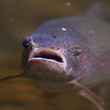
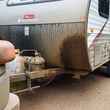



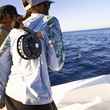
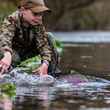
Comments
John Ladd replied on Permalink
The temptation can be overwhelming but the snide, politically motivated comment contrasting the inability of fish to escape the Texas cold snap to Senator Cruz's avoidance of the same cold snap distracts from the quality of the Chris Hunt article and the overall quality of the Hatch newsletter.
Randy L replied on Permalink
I agree. Gratuitous.
Kenneth Lane replied on Permalink
Seeing things that are not there has a name. Fish kills and most all events have cause and effect------------wondering about the agendas of those who dispute that fact.
Kenneth Lane replied on Permalink
The regenerative ability of nature is great but this fish kill will have lasting effects for five years and forward. Many of the killed species are not washed up to view. It will recover but time is the question.
Pages